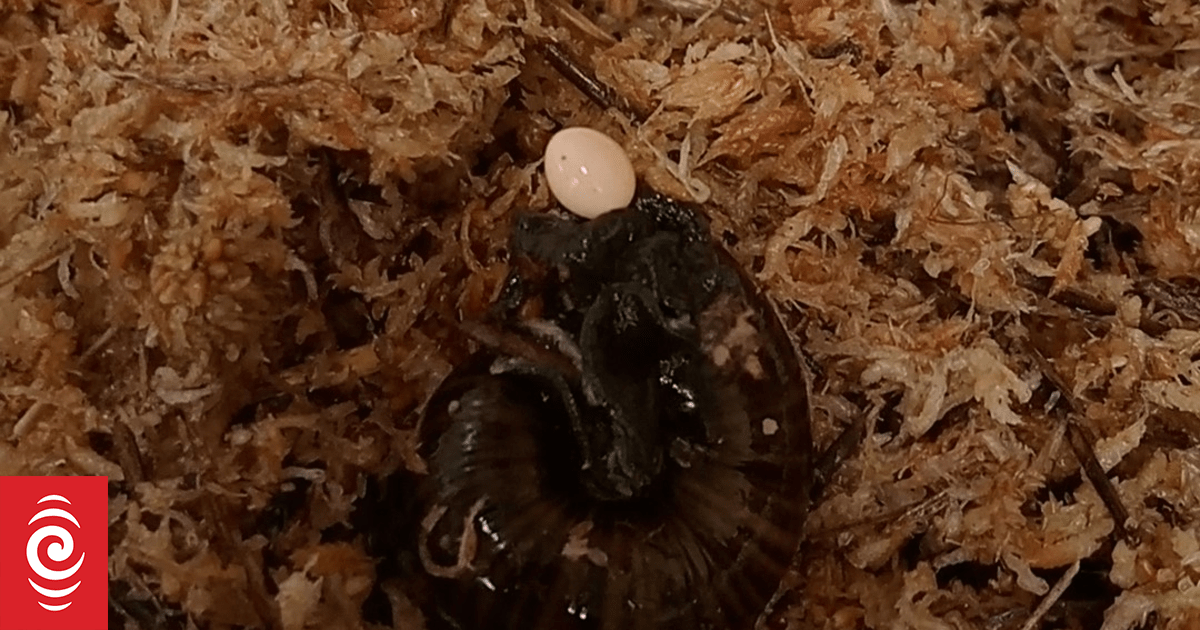A rare and threatened species of West Coast snail has been captured on camera laying an egg for the first time.
The Powelliphanta augusta snail was being weighed by Department of Conservation (DOC) ranger Lisa Flanagan in when the little egg emerged from its neck.
DOC had been managing a captive population of the snails in chilled containers since 2006, when Solid Energy started mining their habitat on the Mt Augustus ridgeline on the western side of the Stockton Plateau near Westport.
Flanagan said it was a special moment after 12 years looking after the snails.
"It’s remarkable that in all the time we’ve spent caring for the snails, this is the first time we’ve seen one lay an egg.
This is pretty neat. They have genitals in their necks right beside their heads.
Have to admit though, when I’m feeling down about my life I do sometimes think oh well at least I’m not being kept in solitary in a container in DOCs fridge! dangerous as well as boring.
As usual the scientist sounds interesting, too.
This is rad but I’m always curious about the different approaches natural selection takes with the few and slow vs. fast and many offspring.
I bore the article goes into much more depth about it all
Yeah especially when it’s an animal type we would normally associate with a different reproductive strategy.
Like I don’t expect a snail to be a 30 year old who lived for 8 years before they even started reproducing.
I guess that’s why they keep them in a fridge - super slow metabolism.
Must be, like bowhead whales etc.
The snails are very specialist - they tried releasing them into adjacent habitat etc and they died. Of course 800 got accidentally frozen to death in the fridge as well.
Yeah, that’s not very typical. I’d like to make that point.
What, that we saved a species before mining the snot out of is habitat?
Great quote, I’m just being sarcastic
The mining company conveniently went bankrupt before the habitat “remediation”.
They are like the Chagos Islanders of snails.
What a disgrace!
Well, there are a lot of these snails going around the world all the time, and very seldom does anything like this happen. I just don’t want people thinking that gastropods aren’t safe.
What, the carnivorous ones?
Well, I was thinking more about the other ones.




